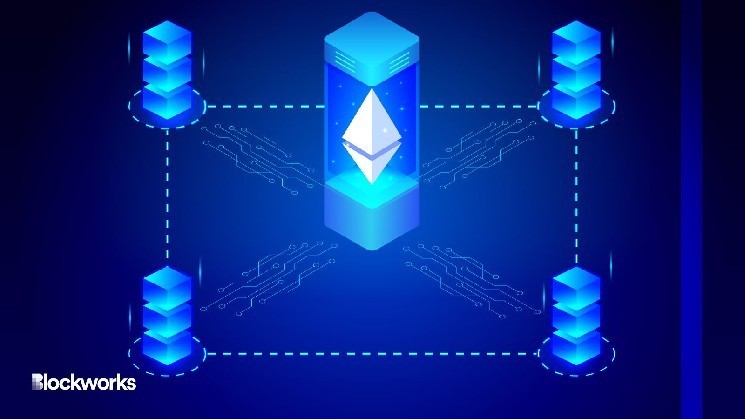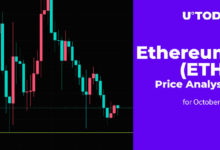Ethereum Staking Demand Skyrockets Following Network Upgrade

Ether (ETH) is witnessing its highest levels of staking activity following a critical update earlier this year.
The network’s transition to Proof-of-Stake (PoS) late last year, coupled with Ethereum’s “Shapella” network upgrade in April, which enabled withdrawals of staked ETH as well as rewards, has led demand for new validators to reach its highest level in two and a half years.
Previously, users could stake their ETH to the Beacon Chain as early as December 2020, but it wasn’t until Shapella was fully implemented that it became possible to withdraw.
As a result, over 1 million ETH was withdrawn shortly after the upgrade, sparking temporary concerns as to whether demand would simply rush to the exit indefinitely and cause the price of ETH to dip.
Yet, this rush has been balanced by an influx of eager validators waiting for activation, indicating a sustained demand for Ethereum staking, an analysis by Coin Metrics shows.
“The entry queue has reached its highest level since the Beacon Chain’s genesis in December 2020, with a total of 64,000 validators eagerly waiting to participate,” Coin Metrics said.
In contrast, there are effectively zero validators wishing to withdraw, that are stuck in the queue. That’s a stark contrast to withdrawal queues just last month, which stood at roughly 17,500.
The surge of new validators has helped drive the active validator count to a new high of nearly 584,000, data shows. This number has more than made up for the transient decrease in complete withdrawals that occurred when withdrawals were initially introduced.
As the number of active validators approaches the 589,000 mark, an internal protocol parameter, known as the Churn Limit, will rise, allowing for the daily activation of an extra 225 validators.
However, even with this increased pace, individuals or staking pools spinning up new validators to join the queue today would still need just over a month to become active, Coin Metrics noted.
Liquid staking tokens predicted to fuel staking value
A budding narrative in the decentralized finance (DeFi) world underscores the escalating demand for Liquid Staking Tokens (LSTs).
These tokens, representative of staked assets, bring a new level of liquidity to the traditionally illiquid PoS model by allowing staked assets to participate in DeFi applications while still contributing to the network’s security.
They provide a bridge between staking and DeFi by offering liquid tokens that represent staked ETH, allowing holders to freely interact with DeFi protocols while still earning staking rewards.
The growing prominence of LSTs within DeFi is intricately linked to Ethereum’s staking ecosystem. Behind every LST, there is a staking operation, providing the required security and validation for the Ethereum network.
Some of the established decentralized players are jockeying for market share, such as Lido DAO (LDO), Frax (FXS) and Rocket Pool (RPL), alongside centralized staking providers such as Coinbase, and a slew of others, with new offerings cropping up regularly post-Shapella.
In essence, the explosion of LSTs within DeFi implies a parallel increase in Ethereum staking activity. As the role of LSTs becomes more integral to DeFi’s future, it may inadvertently fuel the demand for ETH, Blockworks was previously told.






 Bitcoin
Bitcoin  Ethereum
Ethereum  Tether
Tether  USDC
USDC  TRON
TRON  Dogecoin
Dogecoin  Cardano
Cardano  Bitcoin Cash
Bitcoin Cash  Chainlink
Chainlink  Monero
Monero  Zcash
Zcash  LEO Token
LEO Token  Stellar
Stellar  Litecoin
Litecoin  Hedera
Hedera  Dai
Dai  Cronos
Cronos  OKB
OKB  Tether Gold
Tether Gold  Ethereum Classic
Ethereum Classic  KuCoin
KuCoin  Gate
Gate  Algorand
Algorand  Cosmos Hub
Cosmos Hub  VeChain
VeChain  TrueUSD
TrueUSD  Dash
Dash  Tezos
Tezos  Stacks
Stacks  IOTA
IOTA  Basic Attention
Basic Attention  Theta Network
Theta Network  Decred
Decred  NEO
NEO  Synthetix
Synthetix  Qtum
Qtum  Ravencoin
Ravencoin  0x Protocol
0x Protocol  DigiByte
DigiByte  Nano
Nano  Zilliqa
Zilliqa  Holo
Holo  Siacoin
Siacoin  Numeraire
Numeraire  Waves
Waves  BUSD
BUSD  Status
Status  Enjin Coin
Enjin Coin  Pax Dollar
Pax Dollar  Ontology
Ontology  Hive
Hive  Lisk
Lisk  Steem
Steem  Huobi
Huobi  NEM
NEM  OMG Network
OMG Network  Bitcoin Gold
Bitcoin Gold  Augur
Augur  Ren
Ren  HUSD
HUSD